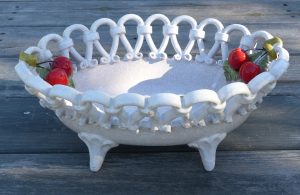In recent years, there has been a notable shift in consumer preferences towards hand-made goods, with pottery emerging as a particularly popular choice among discerning buyers. This trend appears to be a reaction against the ubiquitous presence of cheap, mass-produced items that, while affordable, often lack the unique character and quality found in artisan creations.
The allure of authenticity
At a time when digital and automated processes dominate many aspects of our lives, there is a profound yearning for authenticity. Hand-made pottery, with its visible imperfections and variations, offers a tangible connection to the artisan who crafted it. Each piece tells a story, bearing the marks of the human hands that shaped it, and thus carries an inherent uniqueness that mass-produced items cannot replicate. Consumers increasingly value these qualities, seeking to surround themselves with objects that have meaning and individuality.
An appreciation of craftsmanship
The rise in popularity of hand-made pottery also reflects a burgeoning appreciation for craftsmanship. Unlike machine-made goods, pottery made by skilled artisans requires a significant investment of time, expertise, and creativity. From selecting the right clay to the intricate process of glazing and firing, each step demands precision and knowledge. The end result is a product that not only functions but also serves as a piece of art. This appreciation for the skill and effort involved in creating hand-made pottery aligns with a broader cultural movement towards valuing artisanal trades and traditional techniques.
Aesthetic diversity and personalization
Hand-made pottery presents an opportunity for aesthetic diversity and personalization that mass-produced counterparts fail to offer. Artisans bring their individual styles to their creations, resulting in a wide array of designs, colours, and forms. This variety allows consumers to express their personalities through their choice of pottery, from minimalist designs to intricate patterns. Furthermore, many potters offer customisation options, allowing buyers to commission pieces that reflect their personal tastes or commemorate special occasions.
Environmental considerations
The environmental impact of consumer choices is becoming a pivotal concern for many individuals. In contrast to the often wasteful practices associated with mass production, hand-made pottery tends to be more sustainable. Local artisans typically use natural materials and traditional firing techniques that have a lower carbon footprint. Additionally, hand-made pottery is generally more durable, reducing the need for frequent replacements and contributing to a more sustainable lifestyle. For eco-conscious consumers, choosing hand-made pottery is a means of aligning their purchasing decisions with their values.
Supporting local economies and communities
Purchasing hand-made pottery also provides a way to support local economies and communities. By choosing to buy from independent artisans, consumers are directly contributing to the livelihoods of potters and helping to sustain their craft. This support is especially crucial in regions where pottery is a traditional art form facing challenges from industrial competition. In fostering these local economies, buyers become participants in preserving cultural heritage and encouraging the growth of artisan communities.
The resurgence of interest in hand-made pottery reveals much about shifting consumer priorities. In an age dominated by uniformity and disposability, the appeal of unique, lovingly crafted goods is stronger than ever. Hand-made pottery not only offers aesthetic and functional benefits but also encapsulates broader values such as authenticity, sustainability, and community support. As we continue to redefine the relationship between consumerism and craftsmanship, the pottery wheel spins on, shaping objects that resonate with the stories of their makers and the lives of those who cherish them.



















